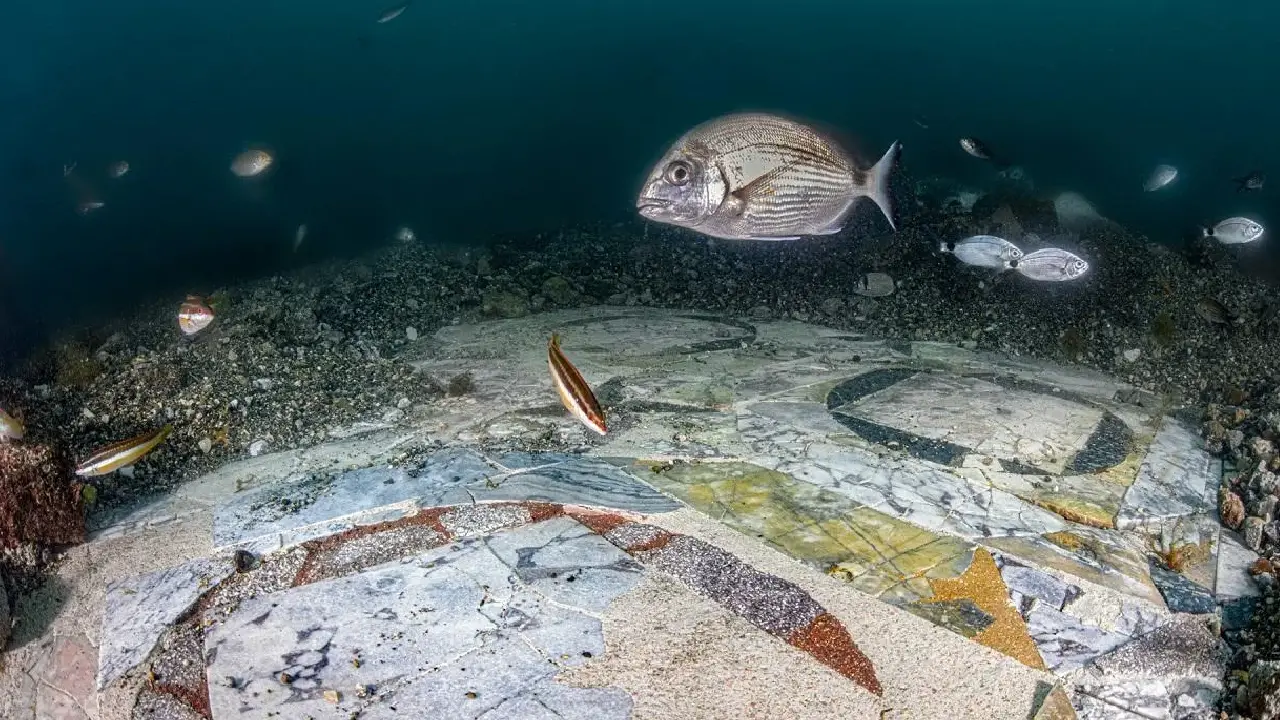A breathtaking discovery has emerged from the depths of the Submerged Archaeological Park of Baiae in Italy: a meticulously restored marble floor belonging to an ancient Roman villa. This underwater treasure, unveiled as part of a complex restoration project, offers a tantalizing glimpse into the opulence and sophistication of Roman society.
The project, a collaborative effort between CSR Restauro Beni Culturali and Naumacos Underwater Archaeology and Technology, has faced significant challenges due to the extensive area and fragmented nature of the remains. Despite these obstacles, archaeologists have managed to uncover a stunning mosaic floor, dating back to the later years of the Roman Empire. This opus sectile masterpiece, covering approximately 250 square meters, showcases intricate geometric patterns formed by precisely cut pieces of marble.

Unlike traditional mosaics made with small, uniform tesserae, opus sectile employs larger, carefully shaped pieces that fit together like a puzzle. This technique allowed for more intricate and detailed designs, often incorporating a variety of colors and materials to create a visually stunning effect. Such floors were typically found in high-status buildings, such as villas, palaces, and public baths.
The discovery of this magnificent floor has sparked excitement and admiration. Mayor Josi Gerardo Della Ragione of Bacoli described it as “the magic of Baia Sommersa,” highlighting its elaborate motifs and exceptional craftsmanship. He emphasized the floor’s significance as a window into the life and art of ancient Rome, inviting visitors to immerse themselves in history and explore the hidden wonders beneath the sea.

The Parco Archeologico Campi Flegrei, the organization overseeing the restoration, described the project as a “very complicated challenge” due to the extensive fragmentation of the remains. Interestingly, the floor’s construction from second-hand marble reflects the economic pressures faced even by the elite during the decline of the Roman Empire. Researchers noted that the villa’s owner had to settle for recycled materials to create the desired design, despite the significant cost and effort involved.
Baiae, once a renowned resort for Roman elites, was famous for its thermal baths, lavish villas, and hedonistic atmosphere. Emperors such as Nero and Hadrian were known to frequent the area, drawn by its luxurious amenities. However, due to volcanic activity and bradyseism, significant portions of Baiae eventually sank below sea level. Today, the ruins of Baiae form part of the underwater park, where divers and visitors can explore sunken structures, mosaics, statues, and remnants of Roman architecture.

Leave a Reply